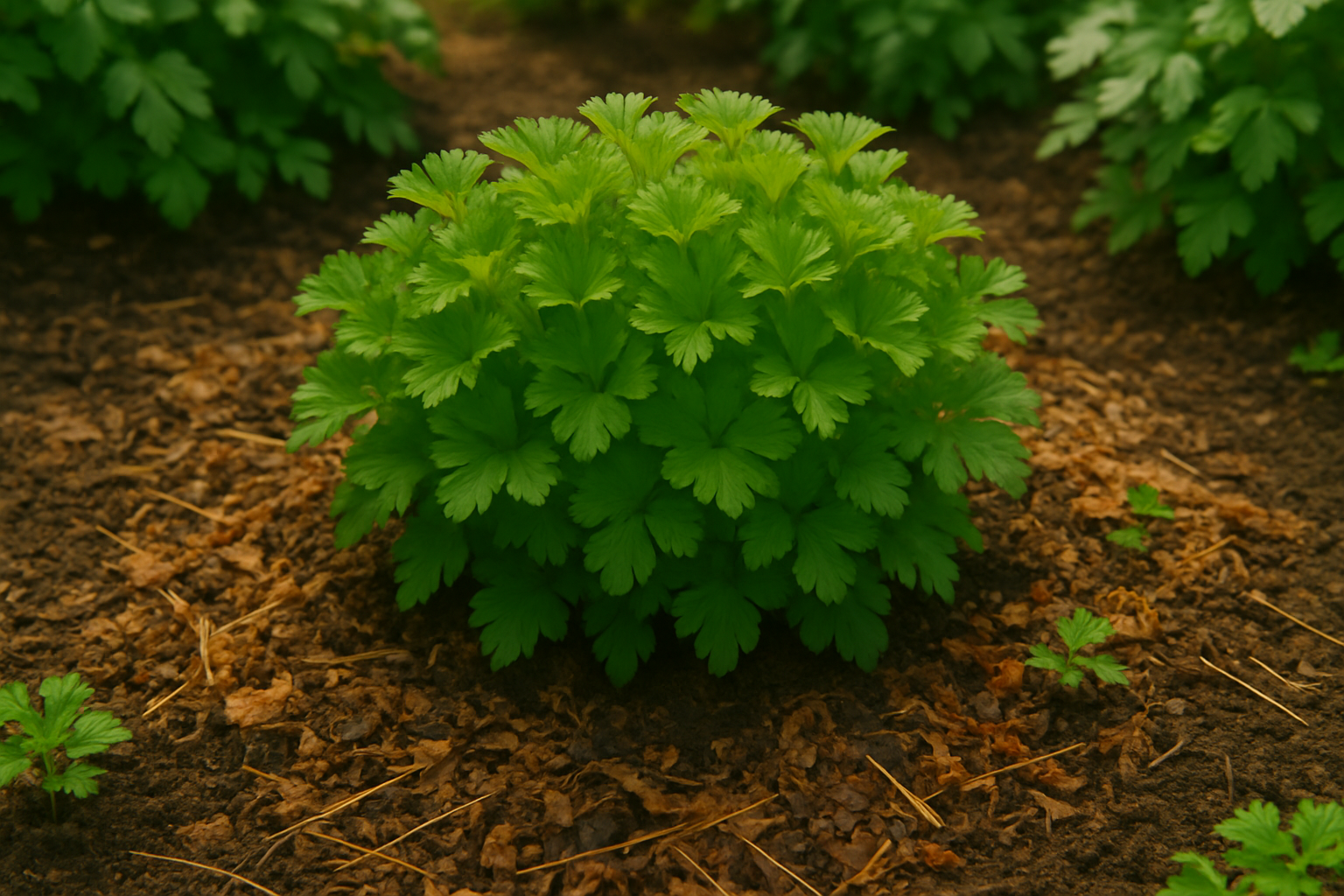Introduction to Mulching Parsley
Mulching parsley is a simple gardening technique that can make a big difference for this popular herb. Known for its bright flavor and versatility, parsley is a staple in kitchen gardens and home-cooked meals everywhere. Whether you’re garnishing soups, mixing up tabbouleh, or adding a fresh touch to sauces, parsley’s lacy green leaves are a must-have for both beginner and experienced gardeners.
Like all herbs, parsley thrives best when its needs—from nutrients to moisture—are met consistently. This is where mulching comes in. Mulch is any material—such as straw, compost, or shredded leaves—spread over the soil’s surface to help conserve water, suppress weeds, and regulate soil temperature. It’s commonly used with herbs because it creates a more stable and productive growing environment.
If you’ve never tried mulching parsley before, you might be surprised at how much this simple step can improve plant health and harvest quality. In this blog post, we’ll explore the specific benefits of mulching parsley and offer straightforward, actionable steps you can use right away to get the most from your herb patch. Whether you grow parsley in garden beds or containers, these tips can set you up for a lush, thriving harvest.
Why Mulch Matters for Parsley
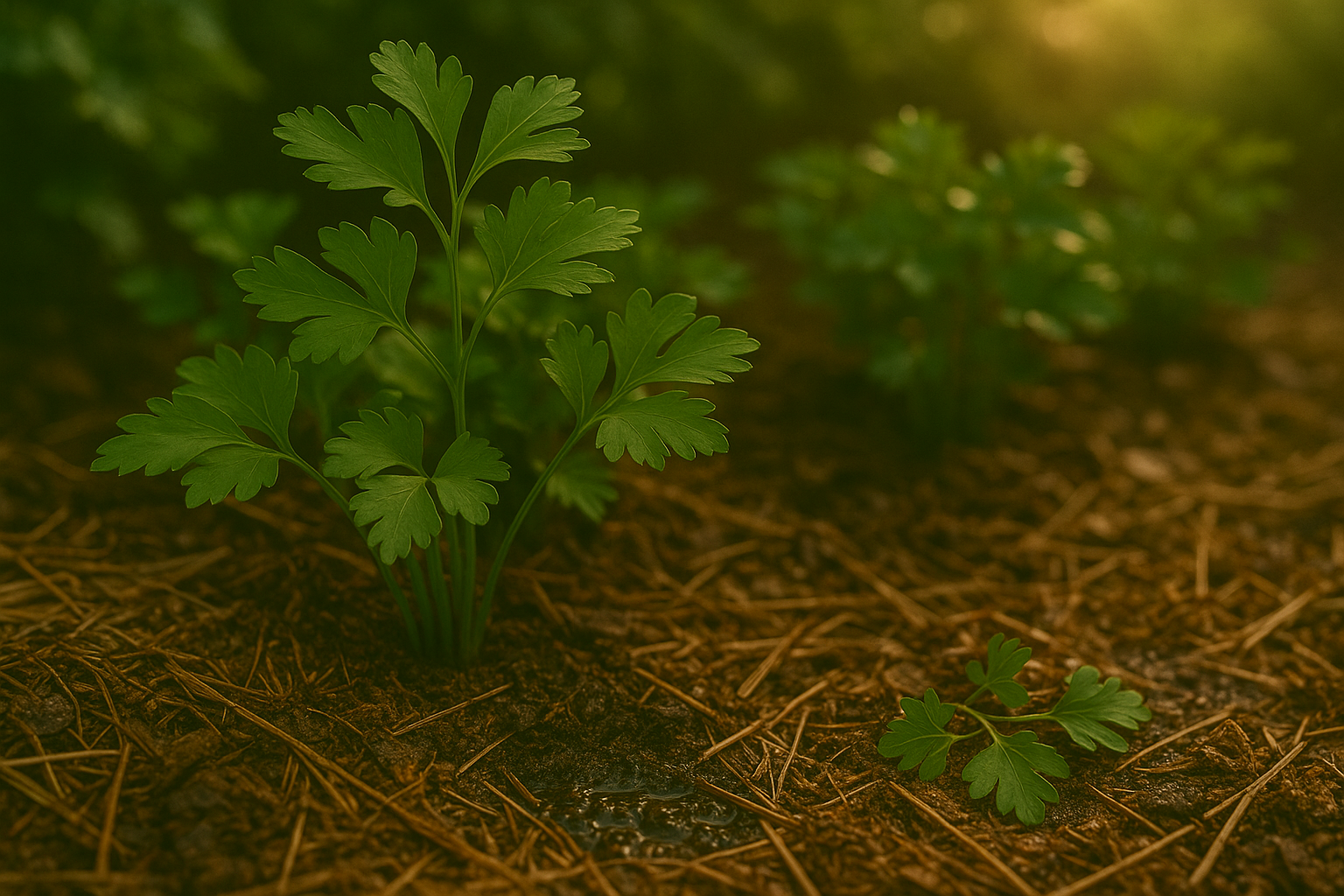
Mulch is a game-changer for parsley, especially since this herb’s roots stay close to the soil surface and can dry out quickly. A 2- to 3-inch layer of straw, shredded leaves, or compost helps the soil hold onto moisture, saving you from frequent watering and protecting parsley’s delicate roots from the hot afternoon sun.
Plus, mulch acts as a natural barrier against weeds, which compete with parsley for water and nutrients. With fewer weeds, your parsley has a better chance to thrive.
Another key benefit of mulch is its role as an insulator. It keeps the soil cooler during scorching summer days and shields roots from sudden cold snaps, giving your parsley a stable environment to grow.
Over time, as organic mulch breaks down, it enriches the soil with beneficial nutrients, making it more fertile and boosting parsley’s overall health.
To get started, simply spread a thin layer of mulch around your parsley plants, being careful not to let it pile up against the stems—this simple step can lead to more lush, longer-lasting harvests.
Best Types of Mulch for Parsley
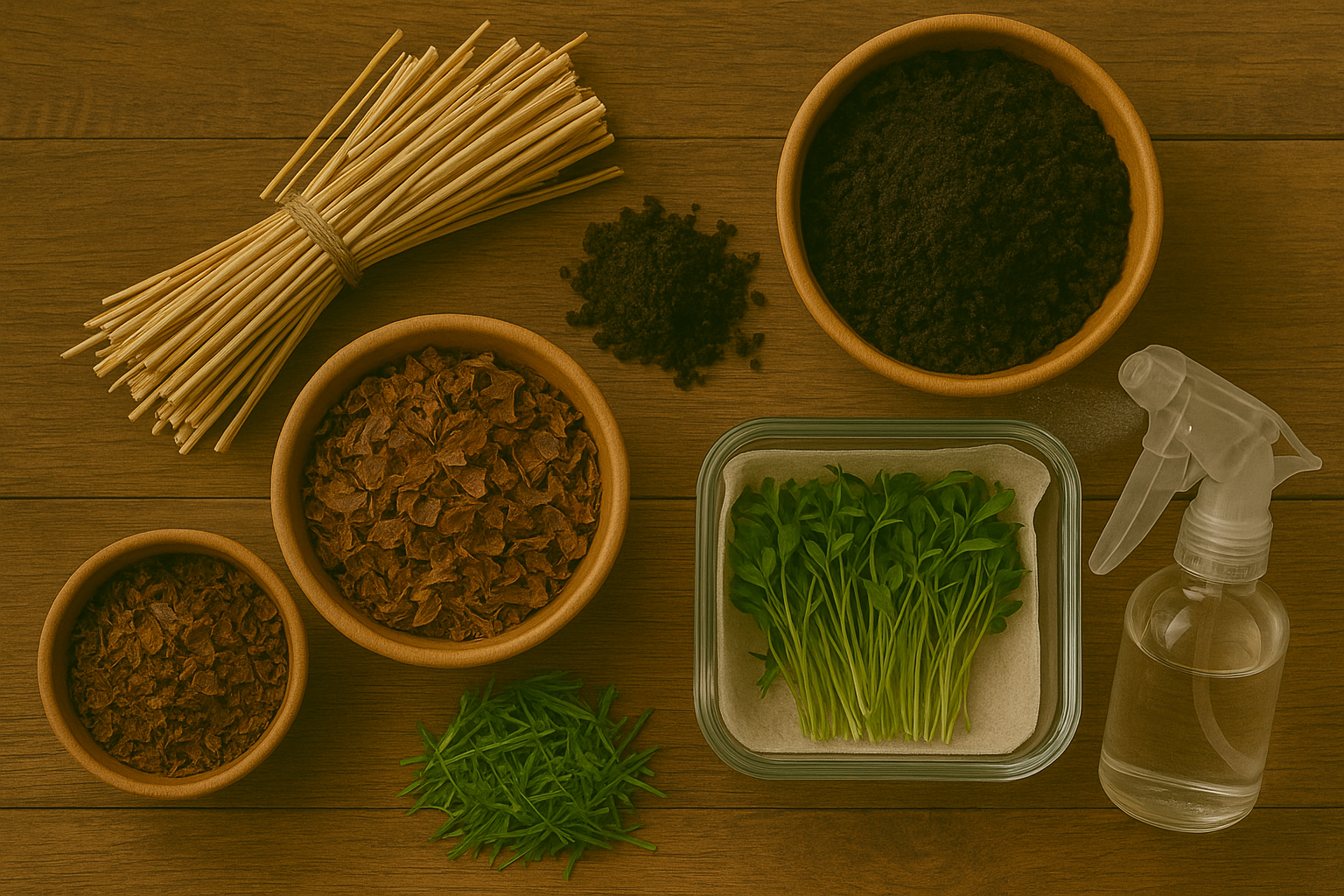
When it comes to mulching parsley, choosing the right organic mulch can make all the difference in promoting healthy, productive plants. Straw is a popular choice because it’s lightweight, retains moisture well, and breaks down slowly, providing long-term weed suppression. However, make sure to use clean, seed-free straw to avoid introducing unwanted weeds into your parsley bed.
Compost offers a nutrient-rich boost, slowly releasing essential minerals as it decomposes—perfect for parsley’s lush, green foliage. Its main downside is that it may compact if applied too thickly, potentially hindering water flow.
Shredded leaves are another excellent option—abundant in fall, they offer great moisture retention and insulating properties. Be mindful to shred them first, as whole leaves can mat and block air circulation.
Grass clippings are easy to source and decompose quickly, feeding your parsley. Just use untreated, pesticide-free clippings and apply thin layers to prevent matting and unpleasant odors.
It’s wise to avoid mulch types like wood chips or bark, which can attract pests and leach nitrogen from the soil. Also, steer clear of hay, which often harbors weed seeds and unwanted critters.
When growing herbs like parsley, organic mulches are always preferred over inorganic types (such as gravel or rubber) since they enrich the soil, foster beneficial microbes, and reduce the risk of chemical contamination in your edible plants. With a little care in mulch selection, you’ll help your parsley thrive all season long.
How to Apply Mulch for Healthy Parsley
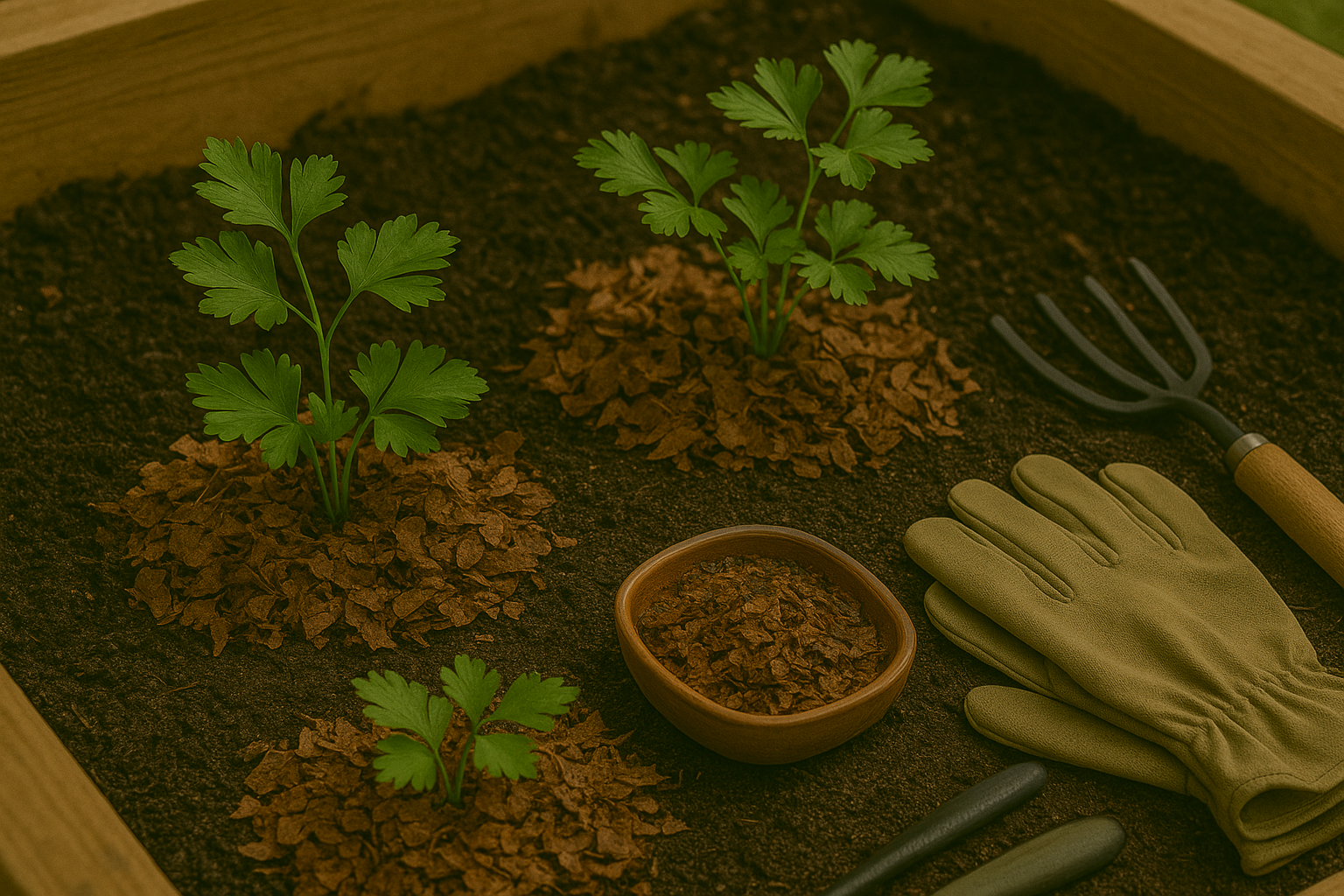
Mulching parsley is a simple yet effective way to create a healthier, more productive herb garden. The best time to mulch parsley is right after planting seeds or transplanting young plants. Waiting about a week allows the soil to warm up and gives your seedlings time to establish, which helps the mulch conserve moisture and suppress weeds without smothering delicate growth.
Start by thoroughly watering your parsley. Then, lay down a 1- to 2-inch layer of organic mulch, such as shredded leaves, pesticide-free grass clippings, straw, or finely chopped bark. Be sure to keep the mulch about an inch away from the stems; piling it against the base can trap moisture and lead to stem rot or pest problems.
Check your mulch regularly—especially after rain or watering—and fluff or replenish it as needed to maintain that 1- to 2-inch thickness. For a budget-friendly DIY option, collect autumn leaves and shred them with a mower, or repurpose clean newspaper by tearing it into strips and layering it beneath grass clippings. Both alternatives work well to keep weeds down and soil moist.
Remember, the goal is to create a protective, breathable mat over the soil surface—not a heavy, wet blanket. This careful approach helps your parsley thrive through summer heat and keeps roots shielded from winter chills, ensuring fresher, fuller harvests.
Seasonal Mulching
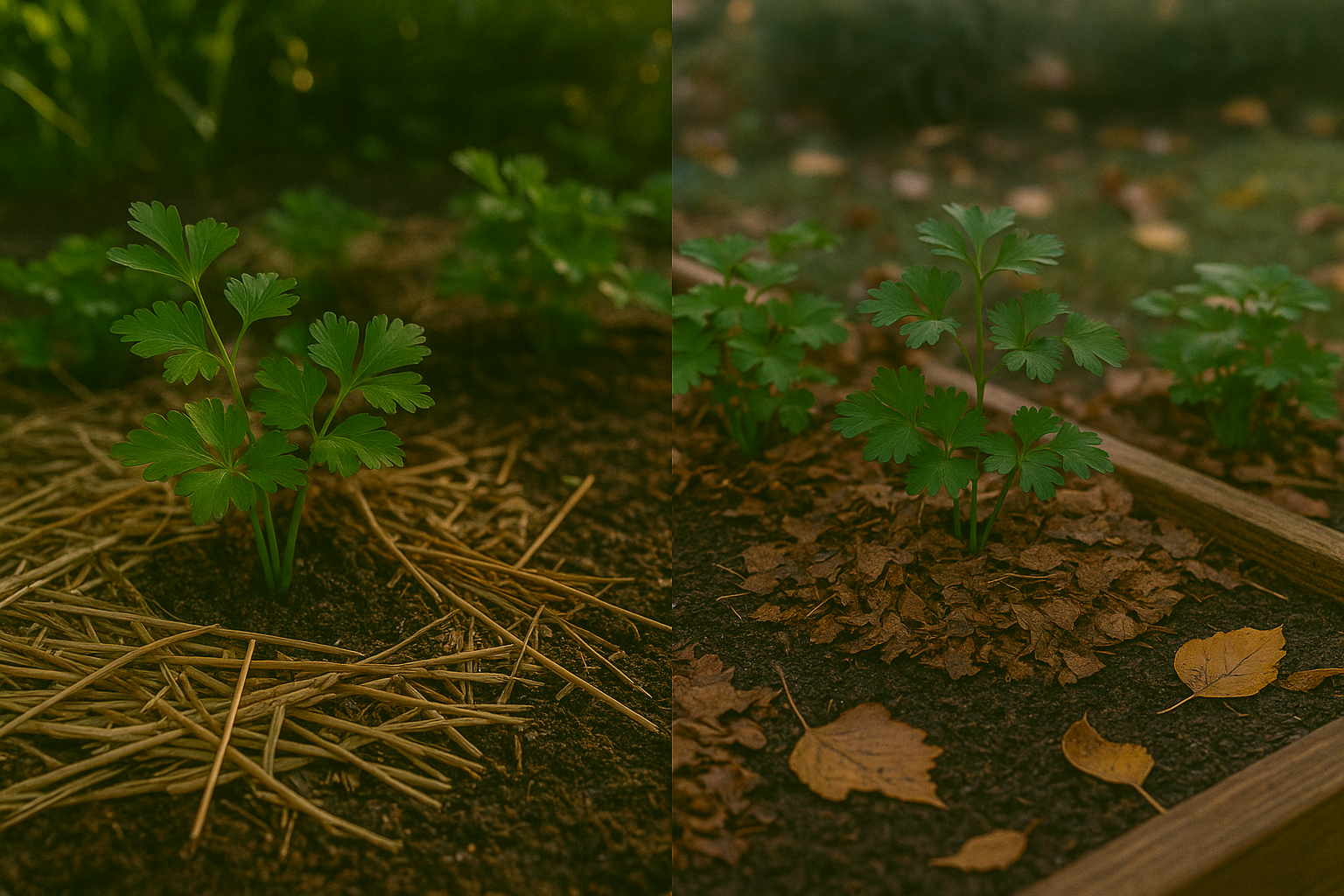
Seasonal mulching is key to keeping your parsley healthy all year round. In summer, apply a 2-3 inch layer of organic mulch like straw, shredded leaves, or compost to help the soil retain moisture and shield the roots from intense heat. Water thoroughly before mulching so the trapped moisture reaches the plants.
For perennial parsley, winter brings new priorities: switch to a thicker mulch layer—about 4 inches—using straw or dry leaves to insulate the roots from cold snaps and temperature swings that could damage or kill the plant. Always remove old, compacted mulch at the end of each season to prevent fungal issues and refresh with new material to ensure maximum benefits.
If your parsley is growing in containers, remember that pots dry out faster and roots are more exposed. Use a lighter mulch, such as fine bark or coir, and check soil moisture frequently. During winter, consider moving containers to a sheltered spot and piling mulch around and over the pots for extra protection.
Regularly adjust mulch depth based on the weather: lighten it during wet spells to prevent soggy roots, and increase it before a predicted heatwave or frost. With these simple seasonal tweaks, parsley can thrive in any climate.
Common Mulching Mistakes with Parsley and How to Avoid Them
When mulching parsley, it’s easy to make a few common mistakes that can harm your plants instead of helping them. Over-mulching, for example, smothers parsley roots by trapping too much moisture and blocking airflow, which encourages root rot and fungal diseases. Aim for a light layer—about 1 to 2 inches—so soil stays damp but not soggy.
Another issue is using the wrong mulch; thick, heavy materials like wood chips can hold too much water and even introduce pests. Opt for lighter organic mulches, such as straw or finely shredded leaves, which break down easily and add nutrients to the soil.
Placing mulch right up against parsley stems is a frequent error and can cause stems to rot or invite slug damage. Leave a small gap (about an inch) around each plant’s base so the stems stay dry and healthy.
To keep parsley thriving, check the mulch regularly for mold, pests, or signs of excessive wetness. Fluff and replenish the mulch as needed, especially after heavy rain or watering. With these tips, your parsley will enjoy the benefits of mulch without the usual pitfalls.
Conclusion & Quick Tips for Mulched Parsley Success
Mulching parsley offers many benefits, from locking in soil moisture and keeping weeds at bay to protecting tender roots from temperature swings. When mulching your parsley, choose materials like straw, compost, or finely shredded leaves—these help keep the soil healthy and decompose to add nutrients.
Spread mulch in a thin, even layer, leaving a bit of space around plant stems to prevent rot. Avoid using thick, heavy mulch that can suffocate young plants or attract pests. Also, steer clear of fresh grass clippings, which may introduce weeds or diseases.
For beginners, mulching is a simple, low-effort way to boost parsley growth. Just observe your plants and adjust as needed. Give mulching a try this season and notice the difference in your harvest. If you have tips or photos from your own parsley patch, share them in the comments to help others learn from your experience!
